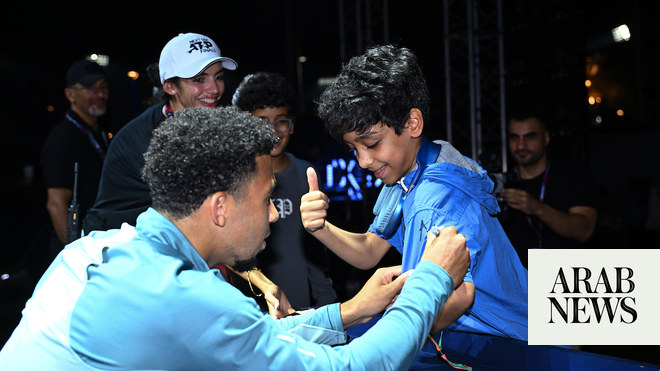
t the end of her speech after a seventh dismantling of seven, Iga Swiatek returned to the mic with one final thought: “Maybe it just had to be like that,” she said, laughing. “Another underdog is gonna win a grand slam. In women’s tennis it’s so open right now that it’s crazy.”
Although it was a shock to see Swiatek forego a more conventional path to a first slam title by winning at 19, conceding an absurd 28 games and clinching her first tour-level title at Roland Garros, in some ways women’s tennis has not been open for the past two years. The youth have arrived and they are consistently slamming the door on the rest.
Seven of the past eight grand slam titles have been won by players under the age of 23: Naomi Osaka, Sofia Kenin, Ashleigh Barty, Bianca Andreescu and Swiatek. The common denominator between them is the contempt they have shown for custom and experience. They are here, they are good enough and they will produce their best on the big stages in order to win.
They have arrived with their own specific style of play. As she became the first woman since Justine Henin in 2007 to win Roland Garros without dropping a set, Swiatek has demonstrated so many different layers to her game. She dominates opponents with her vicious topspin forehand and her return of serve statistics are astounding, but she can also serve at a high level, she is a supreme athlete and her hands are delicate in all parts of the court.
Andreescu, who engineered one of the most astonishing breakthroughs in decades by winning the Canadian Open and US Open in her first two events after a five-month shoulder injury, has a similar ability to win points in so many different ways. Kenin belies her lack of power with intelligence and courage. Osaka’s combination of booming weapons, toughness and emotional intelligence have already secured her three grand slams.
They are all watching closely and inspiring each other in turn. As Swiatek marched to victory, Osaka was one of the loudest voices of support on Twitter. One of the formative matches of Swiatek’s career came last year when she faced Osaka in a match of outrageous shot-making and athleticism at the Rogers Cup in Toronto. Both left the court feeling like they had been part of something special, a brief glimpse into the future. They have become friends.
This tournament has also been a reflection of the deficiencies of the middle-aged generation. Garbiñe Muguruza arrived in impressive form, only to collapse while leading Danielle Collins 3-0 and 40-30 in the third set. The draw opened up for the third seed, Elina Svitolina, who was soundly beaten by the No 131 Nadia Podoroska. Most of the other prominent players were out in the first couple of rounds.
While the pandemic has had a clear effect on the tournament, it is reflective of a lack of consistency at the top. The increased depth of the sport is such that anyone who fails to consistently produce quality tennis will be punished. The hope is that this rising generation will compete against each other over many years, building rivalries and spectacularly combining their contrasting styles.
Few matches in recent years have felt more significant than the first meeting between Andreescu and Osaka in the quarter-final of the China Open this time last year. Although tucked away at the end of the season, the stratospheric quality and tension felt like a slam final.
After losing in three tense sets, Andreescu skipped to the net with a smile on her face and she pulled Osaka in for a hug: “You played amazing,” she said. “We’re going to have so many more matches like this. I can’t wait to see what the future holds.”
The future has been grim for Andreescu, who has been out for almost a year with a knee injury sustained at the WTA finals last October. Her trials are a reminder of how these things do not always work out. Injuries are inevitable, some will make wrong decisions or fail to develop as expected but this is a special group of players and it is hard to imagine their rise will not continue.












